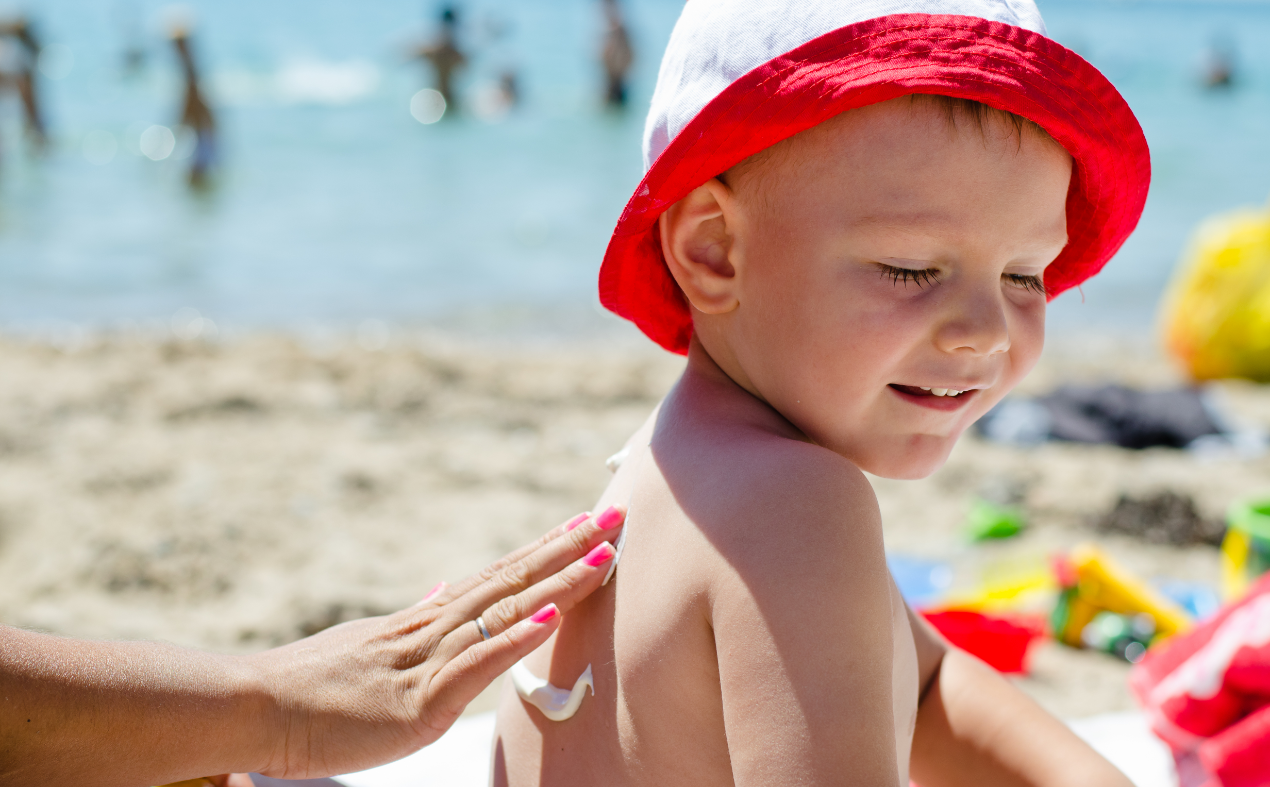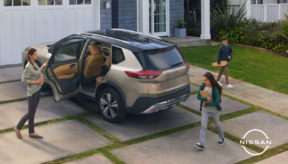Summer is finally here! It’s time to come out of our hibernation caves and into the sunshine. Trips to the park, the zoo, outdoor pools, stroller walks, bike rides — you name it, my kids are up for it. (She said, already exhausted.) Since we’ll be spending time in the sun, we need to protect everyone’s skin with the right sunscreen, so we’ve teamed up with Banana Boat to bring you the 411. (… Do people still even call 411 for information?)
When trying any new beauty or skin care product, it’s a good idea to introduce it gradually. I had read good reviews, so I wanted to dive right in, but then I remembered that there can be rare reactions for people who have an allergy or sensitivity to one or more ingredients in sunscreen products. A patch test is a good idea if you have sensitive skin or are trying a new sunscreen for the first time.
Why Should I Try a Patch Test?
Everyone’s skin is different. What works for me might not work for you. And what works for you may not work for your kids. So, if you’re planning to use a product that is completely new to you or your little one, a patch test can help rule out any possible sensitivities or reactions, so you can feel safe and secure when slathering it on. Gosh, slather is such a great word.
How To Do A Patch Test
Apply a tiny amount of sunscreen on a small part of your body such as your inner arm or the inside of your elbow about 24 hours before you’re going to actually need to use the product. That way, you have time for any potential reactions to develop. You’re looking for things like itching, redness, or hives — basically any discomfort that you wouldn’t want all over your body.
If you do have a reaction, wash off the sunscreen right away. A reaction to sunscreen may be linked to co-factors such as sunlight or photosensitivity. It may even be caused by or made worse if a sunscreen is used with other creams and lotions, cosmetics, or certain medications. Reactions can be complex, and they can range from mild to severe, but it’s always best to err on the side of caution where children are concerned.
Even though sunscreen reactions are uncommon, conducting a patch test with a couple of different sunscreens can be a good idea for your kids. After all, you’ll be using it a lot. If a sunscreen is runny or sticky, it gets a “yuck” from my kids, so I try to give them a couple of options — we usually choose one product for face, another for body — and they can pick the texture they like best.
Some sunscreens I recommend are Banana Boat® Simply Protect™ Kids and Banana Boat® Simply Protect™ Baby — they are mineral-based formulas with a SPF 50+ rating, provide broad spectrum UVA & UVB protection, and gentle formulas with no added fragrance. They’re also made with 25% fewer ingredients and made without oxybenzone and parabens. . So whether you’re at the beach, playing in the backyard or having a picnic, you can keep your little ones from getting a nasty sunburn. Noooobody wants to deal with that.
Summer Sun Safety Tips
Getting ready for an outdoor adventure with kids can be hectic. Sorry did I say ‘can be’? I mean ‘is always.’ I keep at least one bottle of sunscreen by the front door so we remember to apply it before we head out, but sometimes I still forget! That’s when I’m glad I have some in my diaper bag and stroller as well. No excuses — if we’re already out the door, we’ll use it on-the-go.
So here’s my summary of sunscreen safety:
- Conduct a patch test. When there’s no reaction, yay! Continue to use.
- Apply a golf-ball sized amount (about 1 oz. or 2 tbsp.) of sunscreen 15 minutes before heading outside.
- Reapply sunscreen every two hours. For real.
- Reapply after swimming or sweating, and immediately after towel-drying.
- Keep your little ones in protective clothing with a wide-brimmed hat and UV-blocking sunglasses. Bonus: babies in sunglasses are adorable.
- If you’re outside for a long time, the shade should be your best friend.
- When it comes to babies under 6 months old, consult a doctor before using any sunscreen.
Okay, have we covered everything? Oh, can’t forget the band-aids — the season of pavement-related boo-boos is upon us. Alright, it’s time to get out there and have some sun-safe fun!
*Opinions expressed are those of the author, and not necessarily those of Parent Life Network or their partners.



 Sponsored
Sponsored




